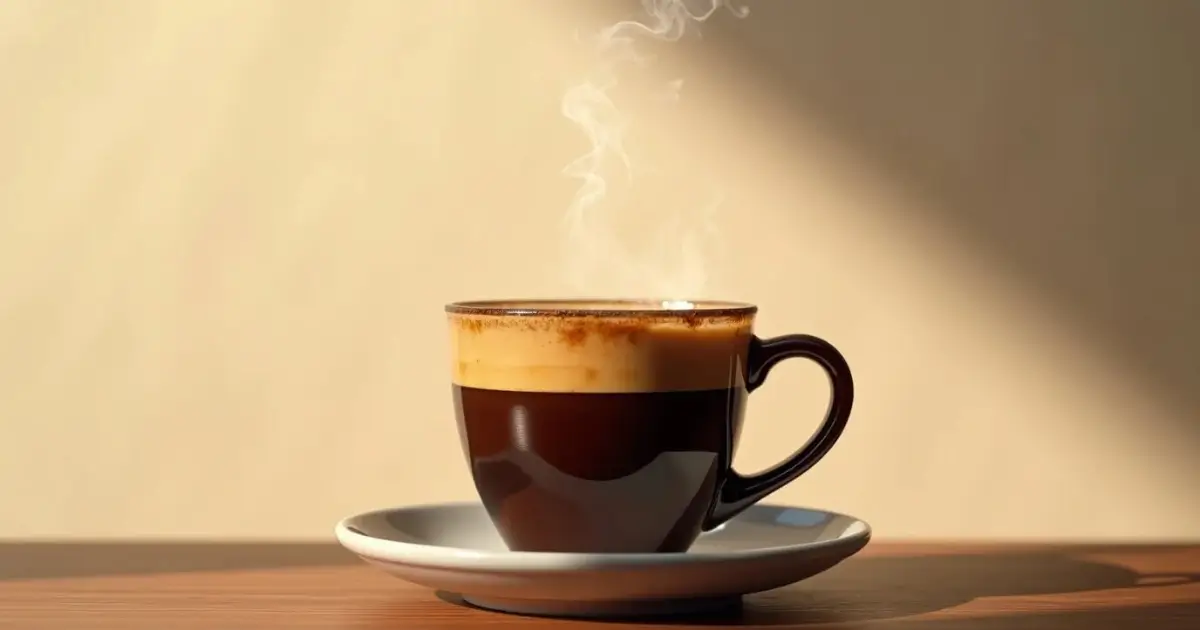
The morning ritual of brewing American coffee has become an essential part of daily life for millions worldwide, with its distinctive aroma creating an inviting atmosphere in countless kitchens. This comprehensive 2024 guide unveils the secrets to crafting the perfect cup of American coffee that rivals professional coffee shops, catering to both coffee enthusiasts seeking to refine their technique and beginners eager to master the basics. From bean selection and equipment choices to precise water temperatures and brewing times, we’ll explore every crucial element that contributes to creating an exceptional cup of coffee at home.
American coffee, distinguished from its European counterparts by its unique drip or filter brewing method, offers a clean, well-balanced taste that sets it apart from concentrated espresso or rich French press preparations.
This guide delves deep into the science behind the perfect brew, combining time-tested techniques with modern innovations to help you achieve consistently outstanding results. Whether you’re upgrading your morning routine or pursuing coffee perfection, our professional barista tips and detailed insights will elevate your coffee-making skills to new heights, ensuring every cup meets your highest expectations
What is American Coffee? Understanding the Basics
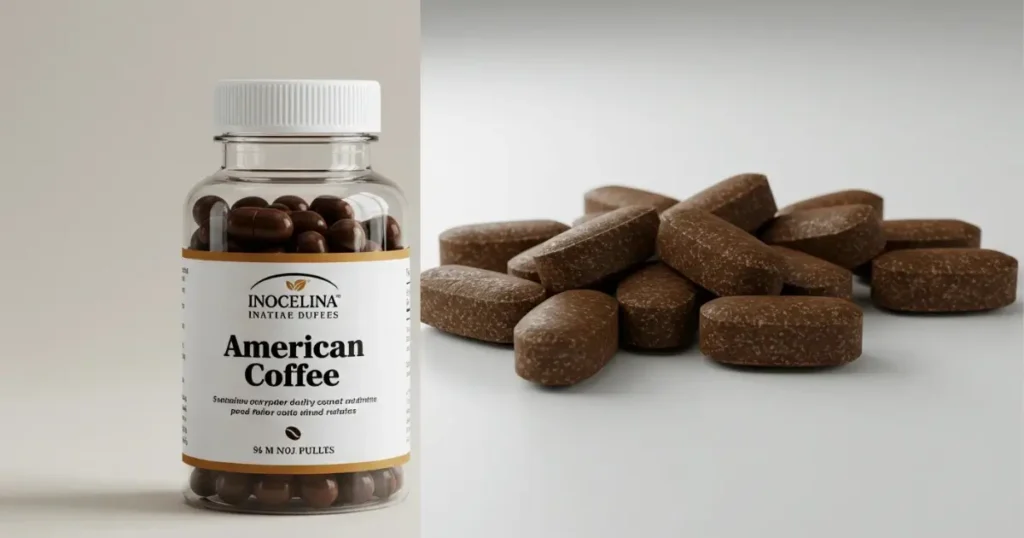
Defining American Coffee vs Other Coffee Types
American coffee, also known as drip coffee or filter coffee, has distinct characteristics that set it apart from other popular brewing methods. Let’s explore these differences in detail:American Coffee vs Espresso
| Feature | American Coffee | Espresso |
| Brewing Method | Drip/filtration | Pressure extraction |
| Brewing Time | 4-6 minutes | 20-30 seconds |
| Water Amount | 6-8 oz per cup | 1 oz per shot |
| Caffeine Content | 95-200mg per cup | 63mg per shot |
| Texture | Light, clean | Thick, concentrated |
Comparison with Other Coffee Types:
- French Press Coffee
- American Coffee: Clean, filtered taste with no sediment
- French Press: Fuller body with more oils and some sediment
- Brewing time: Similar (4-6 minutes)
- Pour-Over Coffee
- American Coffee: Automated brewing process
- Pour-Over: Manual control over water flow
- Result: Similar clarity but pour-over offers more control
- Cold Brew
- American Coffee: Hot water extraction (4-6 minutes)
- Cold Brew: Cold water extraction (12-24 hours)
- Flavor Profile: American is more acidic, cold brew smoother
Key Characteristics of American Coffee:
- Medium body
- Clean, crisp taste
- Balanced flavor profile
- No sediment
- Consistent brewing process
- Easily customizable strength
This brewing method has become the standard in North American households and diners because it offers:
- Convenience
- Consistency
- Scalability (can make multiple cups at once)
- Clean cup profile
- Easy cleanup
Understanding these differences helps coffee enthusiasts choose the right brewing method for their preferences and needs.
The History and Evolution of American Coffee
The story of American coffee is deeply intertwined with the nation’s history, representing a fascinating journey from colonial times to modern-day brewing innovations. Let’s explore this rich history chronologically.Colonial Beginnings (1600s-1700s) The American coffee culture began during colonial times, when coffee houses emerged as important social and political gathering places. After the Boston Tea Party in 1773, drinking coffee became an act of patriotism, as Americans switched from British tea to coffee, fundamentally changing American beverage preferences.
The Birth of Modern Brewing (1800s) In 1865, a crucial development occurred when Jabez Burns patented the first commercial coffee roaster in New York. This invention revolutionized coffee production, making freshly roasted coffee more accessible to the average American household. The late 1800s saw several key innovations:
- 1864: First percolator patent
- 1889: First electric coffee maker
- 1898: Introduction of instant coffee
The Rise of Automatic Drip (1900-1950) The early 20th century brought significant changes to coffee brewing:
- 1908: Melitta Bentz invented the paper coffee filter
- 1928: First automatic pour-over coffee maker
- 1930s: Introduction of the vacuum coffee maker
The Golden Age (1950-1980) The post-World War II era marked the golden age of American coffee, with several landmark developments:
- 1952: Mr. Coffee founder Vincent Marotta is born
- 1972: Mr. Coffee introduces the first automatic drip coffee maker for homes
- 1970s: Drip coffee becomes the standard in American households
Modern Evolution (1980-Present) Recent decades have seen continued innovation:
- 1980s: Introduction of programmable coffee makers
- 1990s: Rise of specialty coffee culture
- 2000s: Smart coffee makers with WiFi connectivity
- 2020s: Integration of AI and precision brewing technology
Cultural Impact American coffee culture has evolved from simple utility to a sophisticated appreciation for quality brewing. The development of American coffee reflects broader social changes:
- Shift from coffee houses to home brewing
- Evolution from basic percolators to sophisticated brewing systems
- Growing emphasis on convenience and consistency
- Recent focus on sustainability and ethical sourcing
Technological Advancements Modern American coffee makers incorporate various innovations:
- Precise temperature control
- Programmable brewing cycles
- Water filtration systems
- Custom strength settings
- Smart home integration
This evolution continues today, with new technologies and brewing methods constantly emerging, while maintaining the fundamental characteristics that make American coffee unique: convenience, consistency, and clean taste.The history of American coffee reflects not just changes in brewing technology, but also shifts in American society, work patterns, and cultural preferences, making it an integral part of American daily life.
Key Characteristics of American Coffee
American coffee possesses several distinctive characteristics that set it apart from other brewing methods. Let’s explore these defining features in detail:
1. Flavor Profile
| Characteristic | Description | Contributing Factors |
| Acidity | Bright and clean | Paper filtration, brewing temperature |
| body | Medium, smooth | Brewing method, filter type |
| aroma | Fresh, pronounced | Fresh grinding, optimal temperature |
| Aftertaste | Clean, minimal | Paper filter removing oils |
2. Brewing Specifications
| Element | Measurement | Optimal Range |
| Water Temperature | Fahrenheit/Celsius | 195-205°F / 90-96°C |
| Brewing Time | Minutes | 4-6 minutes |
| Coffee-to-Water Ratio | Ratio | 1:16 to 1:18 |
| Grind Size | Type | Medium |
The defining elements of American coffee include:
Clarity of Brew
- Crystal clear appearance
- Absence of sediment
- Clean mouthfeel
- No oil slick on surface
Strength and Body
- Medium strength compared to other brewing methods
- Well-balanced flavor extraction
- Lighter body than French press or espresso
- Smooth, easy-drinking texture
Brewing Process Characteristics
- Consistent extraction through paper filtration
- Even water distribution
- Controlled steeping time
- Optimal temperature maintenance
Customization Potential
- Easy to adjust strength
- Compatible with various roast levels
- Adaptable to different serving sizes
- Suitable for flavor additions
These characteristics make American coffee particularly suitable for:
- Daily consumption
- Large batch brewing
- Office environments
- Restaurant service
- Home brewing
Understanding these key characteristics helps in:
- Achieving consistent results
- Troubleshooting brewing issues
- Adjusting to personal preferences
- Maintaining optimal quality
Each of these characteristics contributes to making American coffee one of the most popular brewing methods worldwide, offering a reliable and enjoyable coffee experience.
Popular American Coffee Brewing Methods
Let me elaborate on the most common ways Americans prepare their coffee, focusing on the key methods that have shaped coffee culture in the United States.
1. Pod/Single-Serve Machines According to recent surveys, Keurig and coffee pod machines dominate the American coffee scene, with 30.4% of coffee drinkerschoosing this method
1. The popularity stems from their convenience, offering one-touch operation and consistent results in under a minute. These machines appeal to busy professionals and households where different people prefer various coffee types and flavors.
2. Traditional Auto-Drip Brewers Auto-drip coffee makers remain a cornerstone of American coffee culture, being a staple in homes for nearly a century. These machines excel at producing multiple cups simultaneously, typically 8-12 cups per brew, with a brewing time of 4-6 minutes. Their enduring popularity comes from their reliability, ease of use, and ability to maintain consistent temperature throughout the brewing process.
3. Pour-Over Method This method has gained significant traction among coffee enthusiasts who value precision and control in their brewing process. Pour-over brewing involves manually pouring hot water over coffee grounds in a filter, allowing for precise control over extraction. While it requires more attention and skill than automatic methods, it rewards users with clean, bright flavors and the ability to adjust various brewing parameters.
4. Cold Brew Cold brew has emerged as a popular alternative, especially known for its smooth taste and lower acidity
2. This method involves steeping coffee grounds in cold water for 12-24 hours, producing a concentrate that can be served hot or cold. Its popularity has surged due to its versatility and the smooth, less acidic flavor profile that appeals to many coffee drinkers.
5. Percolators While less common today, percolators maintain a loyal following, especially in traditional settings. These devices cycle hot water through coffee grounds repeatedly, producing a strong, robust brew. Electric models have made this traditional method more accessible and convenient for modern users. Each of these methods continues to evolve with technological advancements and changing consumer preferences, offering coffee enthusiasts various ways to enjoy their perfect cup of American coffee. The choice of method often depends on individual preferences for convenience, flavor profile, and the desired level of involvement in the brewing process.
Essential Equipment and Ingredients
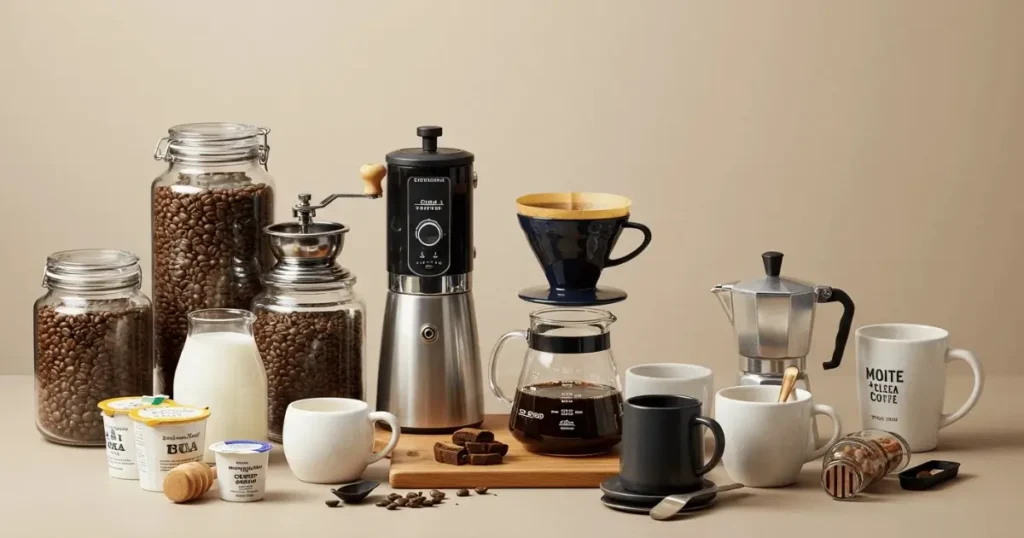
Basic Equipment Needed for American Coffee Brewing
To create the perfect cup of American coffee, you’ll need several essential pieces of equipment. Let me break down the fundamental tools required and their importance in the brewing process.
Primary Equipment:1.
Coffee Maker A quality automatic drip coffee maker is the cornerstone of American coffee brewing. Look for machines that can maintain proper brewing temperature (195-205°F) and provide even water distribution. The best machines feature:
- Programmable settings
- Temperature control
- Multiple cup capacity
- Automatic shut-off
- Water filtration system
2. Coffee Grinder A reliable grinder is crucial for optimal flavor extraction. Two main types are available:
- Burr grinders: Provide consistent grind size and better control
- Blade grinders: More affordable but less consistent
3. Water Filtration System Since water makes up 98% of your coffee, its quality is crucial. Consider:
- Built-in water filters
- Separate water filtration pitcher
- Water softening systems for hard water areas
4. Measuring Tools Precision is key for consistent results:
- Coffee scoop or digital scale
- Measuring cups
- Water level indicators
5. Filters Paper filters are standard for American coffee, available in:
- Bleached (white)
- Unbleached (brown)
- Reusable mesh filters
Additional Recommended Equipment:
6. Storage Solutions Proper storage maintains coffee freshness:
- Airtight containers
- Vacuum-sealed canisters
- Cool, dark storage space
7. Cleaning Supplies Regular maintenance ensures optimal flavor:
- Descaling solution
- Cleaning brushes
- Rinse aids
8. Temperature Control For serving the perfect cup:
- Thermal carafe
- Insulated mugs
- Serving vessels
Remember, while you can start with basic equipment, investing in quality tools will significantly improve your coffee brewing experience and the final product’s taste.
Coffee Bean Selection
Selecting the right coffee beans is crucial for brewing the perfect cup of American coffee. Let me break down the essential aspects of coffee bean selection:
Main Types of Coffee Beans The two primary varieties of coffee beans used in American coffee are:Arabica:
- Milder and more flavorful taste
- Grown at higher altitudes
- Lower caffeine content
- More expensive but higher quality
- Accounts for majority of specialty coffee
Robusta:
- Stronger, more bitter taste
- Higher caffeine content
- More disease resistant
- Often used in commercial blends
- Generally less expensive
Roast Levels Understanding roast levels is crucial for flavor preference:Light Roast:
- Higher acidity
- More original bean flavor
- Light brown color
- No oil on surface
- Brighter taste profile
Medium Roast:
- Balanced flavor
- Medium brown color
- Ideal for American coffee
- No oil on surface
- Most popular for daily drinking
Dark Roast:
- Bold, intense flavor
- Dark brown color
- Oily surface
- Less acidity
- Less caffeine
Freshness Factors For optimal flavor, consider:
- Roast date (ideally within last 2 weeks)
- Proper storage conditions
- Whole beans vs pre-ground
- Package integrity
- Valve-sealed bags
Origin Considerations Different regions produce distinct flavor profiles:
- Central American: Clean, bright taste
- South American: Balanced, mild
- African: Fruity, complex notes
- Asian: Earthy, full-bodied
Quality Indicators Look for:
- Uniform bean size
- No visible defects
- Proper certification
- Transparent sourcing
- Consistent coloring
Remember, personal taste preferences should guide your final selection, and it’s worth experimenting with different beans to find your perfect cup.
Step-by-Step Brewing Guide
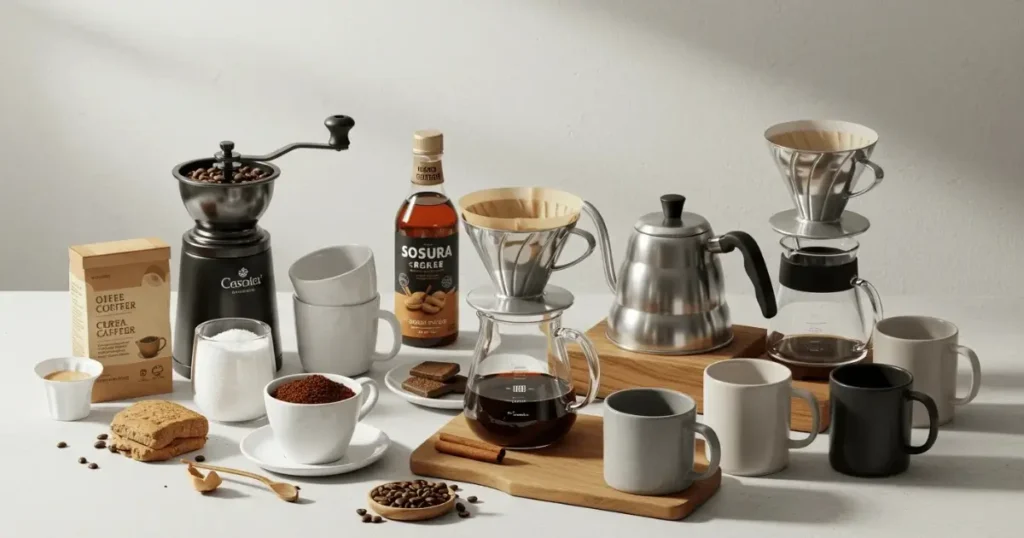
Preparation Time and Measurements
Let me break down the essential timing and measurements for brewing the perfect American coffee:
Standard Brewing Times
- Total preparation time: 5-10 minutes
- Actual brewing time: 4-6 minutes
- Water heating time: 2-3 minutes
- Grinding time: 30 seconds
- Setup and cleanup: 2-3 minutes
Basic Measurements For a standard 8-cup coffee maker:
- Coffee grounds: 2 tablespoons per 6 ounces of water
- Standard ratio: 1:16 (coffee to water)
- Water temperature: 195-205°F (90-96°C)
- Grind size: Medium (similar to sea salt)
Single Serving Measurements For one 8-oz cup:
- Coffee grounds: 2 tablespoons
- Water: 8 ounces
- Filter size: #2 or #4
- Serving temperature: 155-175°F (68-79°C)
Volume Conversions
- 1 standard cup = 8 fluid ounces
- 1 tablespoon of coffee = approximately 5-7 grams
- 1 scoop (standard coffee spoon) = 2 tablespoons
Strength Adjustments
- Mild: 1 tablespoon per 8 oz water
- Medium: 2 tablespoons per 8 oz water
- Strong: 2.5 tablespoons per 8 oz water
Remember that these measurements can be adjusted based on personal taste preferences and specific coffee maker requirements. The key is consistency in your chosen measurements for reproducible results.
Perfect Water Temperature and Quality
Water quality and temperature are crucial factors in brewing excellent American coffee. Here’s a detailed breakdown of what you need to know:
Optimal Temperature Range The ideal water temperature for brewing American coffee is between 195-205°F (90-96°C). This range is critical because:
- Below 195°F: Under-extraction occurs, resulting in weak, sour coffee
- Above 205°F: Risk of over-extraction and burnt taste
- Sweet spot: 200°F (93.3°C) for optimal extraction
Water Quality Factors Quality water significantly impacts coffee taste:
- Mineral Content
- Soft to medium-hard water is ideal
- Too soft: Results in flat taste
- Too hard: Creates bitter notes and scaling in equipment
- Filtration Requirements
- Remove chlorine taste
- Eliminate sediments
- Reduce mineral content if necessary
- Maintain beneficial minerals
Common Water Issues
- Chlorine taste from tap water
- Excessive mineral content
- Off-flavors from old pipes
- Inconsistent temperature
Best Practices
- Use filtered water
- Let boiling water rest for 30 seconds before brewing
- Clean water reservoir regularly
- Test water hardness periodically
- Maintain consistent temperature throughout brewing
Temperature Maintenance
- Pre-heat your coffee maker
- Use insulated carafes
- Avoid reheating brewed coffee
- Monitor water temperature during brewing
Following these guidelines for water temperature and quality will significantly improve your coffee’s taste and consistency.
Ideal Coffee-to-Water Ratio
Understanding the proper coffee-to-water ratio is crucial for brewing consistently great American coffee. Here’s a detailed breakdown of the optimal ratios and measurements:
The Golden Ratio The Specialty Coffee Association of America (SCAA) recommends a “golden ratio” of approximately 1:18 (1 part coffee to 18 parts water) for a balanced cup
2. However, this is just a starting point, as personal preference plays a significant role.Recommended Ratio Ranges
- Standard brewing ratio: 1:15 to 1:18
- Stronger brew ratio: 1:14
- Basic measurement: 2 tablespoons of coffee (10g) per 6 oz (180ml) of water
Practical Applications For those without a scale, a simple rule of thumb is:
- Use 1 tablespoon of coffee for every 4 ounces of water 3
- This provides a consistent starting point for most brewing methods
Strength Adjustments The ratio can be adjusted based on:
- Personal taste preference
- Brewing method
- Coffee roast level
- Bean origin
Important Considerations
- Using a scale provides more precise and consistent results
- Different brewing methods may require slight ratio adjustments
- The type of roast can affect the optimal ratio
- Over-concentrating won’t necessarily make better coffee
Remember that while these ratios provide a solid foundation, the perfect ratio is ultimately the one that produces coffee you enjoy drinking. Start with the standard ratios and adjust to your taste preferences.
Brewing Process and Timing
The brewing process for American coffee requires attention to detail and proper timing for optimal results. Here’s a comprehensive breakdown of the process:
Pre-Brewing Preparation
- Equipment Setup (1-2 minutes):
- Rinse filter if needed
- Warm up coffee maker
- Gather measuring tools
- Water Preparation (2-3 minutes):
- Heat water to 195-205°F
- Filter if necessary
- Measure correct amount
Active Brewing Steps
- Initial Pour (30 seconds):
- Add small amount of hot water
- Allow coffee to “bloom”
- Wait 30-45 seconds
- Main Brewing Phase (4-6 minutes):
- Pour remaining water
- Maintain steady flow
- Monitor brewing time
Critical Timing Points
- Total contact time: 4-6 minutes
- Blooming period: 30-45 seconds
- Drip completion: 1-2 minutes after last pour
Post-Brew Timing
- Serve immediately for best taste
- Maximum holding time: 30 minutes
- Avoid reheating
Troubleshooting Time Issues If coffee tastes:
- Bitter: Reduce brewing time
- Weak: Increase brewing time
- Sour: Check water temperature
Remember that timing can vary slightly based on your specific coffee maker and personal preferences. The key is consistency once you find your ideal timing.
List: Step-by-Step Process
Detailed Steps
- Preparation Phase
- Gather all equipment and ingredients
- Measure water and coffee beans
- Check water temperature (195-205°F)
- Rinse paper filter if using
- Grinding
- Grind beans just before brewing
- Adjust grind size to medium (like sea salt)
- Measure ground coffee according to ratio
- Filter Setup
- Place filter in basket
- Pre-wet filter with hot water
- Discard rinse water from carafe
- The Bloom
- Add ground coffee to filter
- Pour small amount of hot water
- Let coffee bloom for 30-45 seconds
- Main Pour
- Continue pouring water slowly
- Use circular motions
- Maintain steady water level
- Completion
- Allow all water to drip through
- Remove filter
- Serve immediately
Tips for Each Step
- Preparation Tips:
- Use filtered water
- Clean equipment before starting
- Pre-heat carafe with hot water
- Grinding Tips:
- Clean grinder regularly
- Grind only what you need
- Check grind consistency
- Filter Tips:
- Use appropriate filter size
- Ensure proper filter placement
- Check for tears or defects
- Blooming Tips:
- Use twice the coffee weight in water
- Ensure all grounds are saturated
- Watch for bubble formation
- Pouring Tips:
- Maintain consistent pour speed
- Keep water temperature steady
- Avoid disturbing coffee bed
- Completion Tips:
- Never reheat brewed coffee
- Clean equipment immediately
- Store leftover coffee in thermal carafe
Common Mistakes to Avoid
- Preparation Mistakes:
- Using old or stale beans
- Wrong water temperature
- Dirty equipment
- Grinding Mistakes:
- Inconsistent grind size
- Grinding too far in advance
- Wrong grind for brewing method
- Measurement Mistakes:
- Eyeballing measurements
- Incorrect coffee-to-water ratio
- Inconsistent portions
- Timing Mistakes:
- Rushing the bloom phase
- Brewing too quickly/slowly
- Letting coffee sit too long
- Temperature Mistakes:
- Using boiling water
- Not pre-heating equipment
- Letting water cool too much
- Storage Mistakes:
Using old coffee
Keeping beans in original bag
Storing coffee near heat/light
Perfecting Your Technique
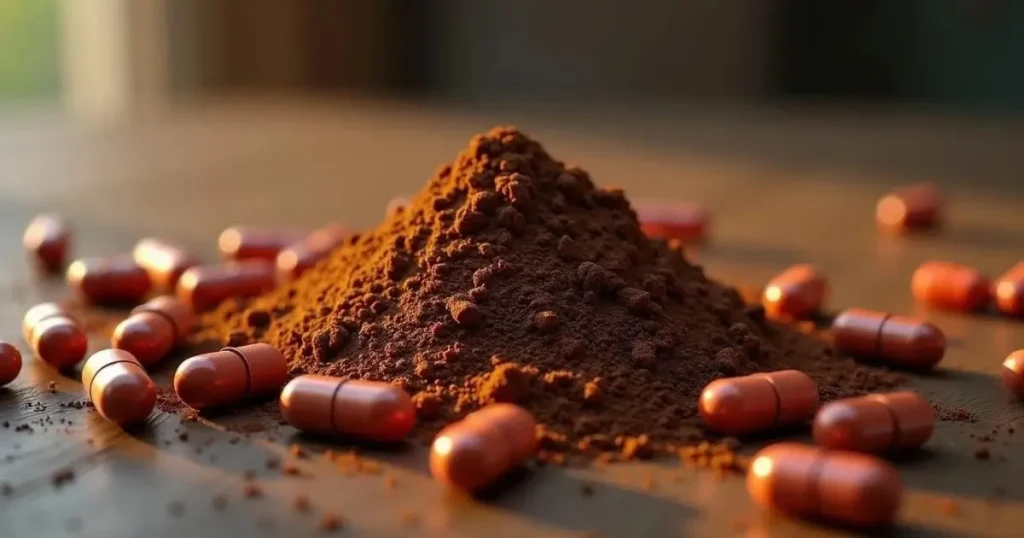
Troubleshooting Common Issues
Here’s a comprehensive guide to resolving common problems when brewing American coffee:
Taste Issues
- Bitter Coffee
- Cause: Over-extraction or too hot water
- Solution:
- Reduce brewing time
- Check water temperature (should be 195-205°F)
- Adjust grind size to be coarser
- Clean coffee maker thoroughly
- Weak Coffee
- Cause: Under-extraction or incorrect ratio
- Solution:
- Use correct coffee-to-water ratio
- Ensure water is hot enough
- Make grind size finer
- Check that water is distributing evenly
- Sour Coffee
- Cause: Under-extraction or water too cool
- Solution:
- Increase water temperature
- Extend brewing time slightly
- Make grind size finer
- Check coffee freshness
Equipment Problems
- Slow Dripping
- Cause: Clogged filter or too fine grind
- Solution:
- Clean coffee maker
- Adjust grind size
- Check for mineral buildup
- Use appropriate filter size
- Overflow Issues
- Cause: Too much coffee or wrong filter
- Solution:
- Check coffee-to-water ratio
- Verify filter size and placement
- Clean basket and sprayhead
- Adjust grind size
Quality Control
- Inconsistent Taste
- Cause: Varying measurements or temperature
- Solution:
- Use consistent measurements
- Monitor water temperature
- Time the brewing process
- Use fresh beans
- Grounds in Coffee
- Cause: Filter issues or wrong grind size
- Solution:
- Check filter fit
- Adjust grind size
- Use quality filters
- Clean equipment regularly
Remember that most issues can be resolved by adjusting one or more of these variables: grind size, water temperature, coffee-to-water ratio, or brewing time.
Professional Barista Tips
Here’s a comprehensive collection of expert tips to elevate your coffee-making skills to a professional level:
Equipment Mastery
- Learn to troubleshoot equipment quickly for small issues
- Keep tools clean and well-maintained
- Understand each component of your coffee maker
- Regular calibration of grinders and equipment
Quality Control
- Taste test regularly throughout shifts
- Monitor extraction times consistently
- Check water temperature frequently
- Maintain cleanliness standards
Advanced Techniques
- Perfect the blooming technique
- Master consistent tamping pressure
- Develop efficient workflow patterns
- Practice proper milk steaming techniques
Bean Management
- Store beans properly
- Monitor roast dates
- Adjust grind size throughout the day
- Track humidity effects on grinding
Customer Service Excellence
- Learn to brighten customers’ days
- Remember regular customers’ preferences
- Maintain consistency in drink preparation
- Handle rush periods efficiently
Professional Development
- Consider comprehensive training courses
- Stay updated with industry trends
- Network with other professionals
- Pursue advanced certifications
Workflow Optimization
- Organize your workspace efficiently
- Prepare for rush periods
- Maintain backup supplies
- Practice time management
Remember that becoming a skilled barista requires continuous learning and practice. The most successful professionals combine technical skills with excellent customer service and attention to detail.
Storage and Freshness Tips
Here’s a comprehensive guide to keeping your coffee beans fresh and flavorful:
Core Storage Principles Three main factors affect coffee freshness:
- Decrease air movement
- Limit temperature fluctuations
- Avoid exposure to sunlight
Container Requirements For optimal storage, use:
- Airtight containers to maintain freshness
- Opaque containers to block light exposure
- Dark-colored storage vessels to protect beans
- Containers with one-way valves if possible
Storage Location Best places to store coffee:
- Cool, dry pantry
- Away from direct sunlight
- Away from heat sources
- Away from moisture
Timeline Guidelines Proper storage times:
- Whole beans in sealed container: 6-9 months in pantry
- Opened whole beans: Up to 6 months 1
- Best consumed within one month for optimal freshness
What to Avoid Common storage mistakes:
- Clear containers that let in light
- Storing near ovens or windows
- Using decorative but non-airtight containers
- Exposure to moisture or humidity
Best Practices
- Buy appropriate quantities for your consumption rate
- Store in small portions
- Keep daily-use amounts separate
- Monitor storage conditions regularly
Remember that proper storage is crucial for maintaining the quality and flavor of your coffee beans. While coffee can last several months, it’s best to consume it within a month of roasting for the freshest taste.
Cleaning and Maintenance
Daily Cleaning
- Rinse removable parts after each use
- Wipe down exterior surfaces
- Empty and clean the drip tray
- Dispose of used grounds and filters
Weekly Maintenance For daily coffee drinkers, perform these tasks weekly:
- Clean brew pots and brewing chambers thoroughly
- Wipe down all machine surfaces
- Clean the water reservoir
- Check and clean the spray head
Monthly Deep Clean If you brew daily, perform a deep clean monthly. This should include:
- Descaling the machine
- Disassembling and cleaning components individually
- Thorough cleaning of all removable parts
- Checking for mineral buildup
Warning Signs for Cleaning Your machine needs immediate attention if:
- Coffee tastes burnt or bitter
- Brewing temperature is incorrect
- Strange noises during operation
- Slower than normal brewing
Cleaning Methods Several effective cleaning options include:
- Vinegar solution
- Commercial descaling products
- Baking soda mixture
- Dish soap (for removable parts)
Long-term Maintenance For optimal performance:
- Change water tank contents regularly
- Hand wash drip tray monthly
- Replace gaskets annually
- Use filtered water when possible
Remember that proper maintenance not only extends your coffee maker’s life but also ensures the best possible taste in every cup.
Variations and Customizations
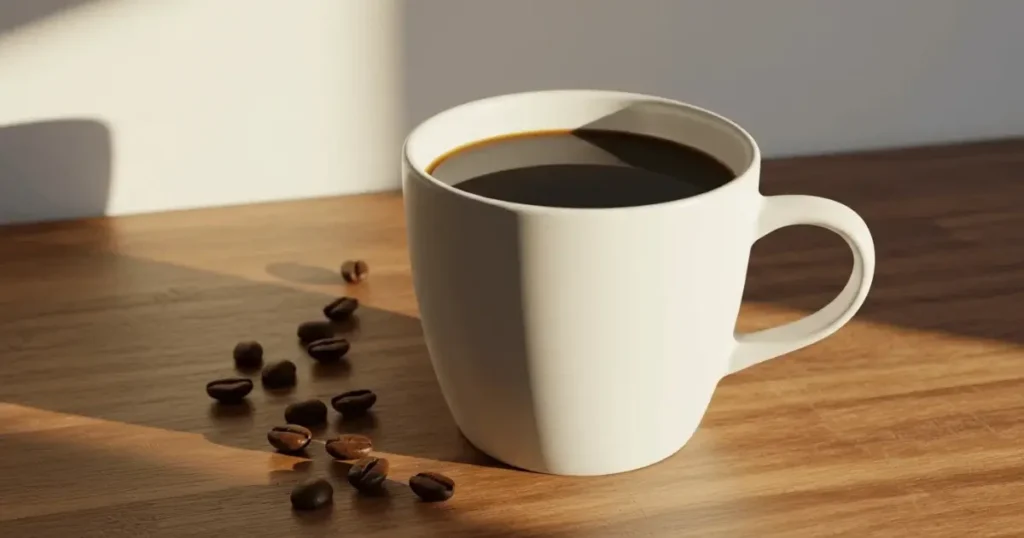
Alternative Brewing Methods
Beyond traditional drip coffee makers, there are several fascinating methods to brew coffee that can enhance your coffee experience:
Popular Alternative Methods
- Pour-Over Brewing
- Uses a cone-shaped dripper
- Allows for precise control over brewing
- Results in clean, bright flavors
- Popular with specialty coffee enthusiasts
- Immersion Brewing
- Steeps coffee grounds directly in water
- Produces rich, full-bodied flavor
- Examples include French Press
- Great for bringing out bold flavors 1
- AeroPress
- Combines pressure and immersion
- Quick brewing time
- Highly portable
- Versatile brewing method
Specialty Methods
- Cold Brew
- Steeps grounds in cold water
- Takes 12-24 hours
- Creates smooth, less acidic coffee
- Perfect for summer drinks
- Chemex
- Elegant glass brewer
- Uses special thick filters
- Produces very clean cup
- Popular in specialty cafes
Benefits of Alternative Methods
- Greater control over brewing variables
- Enhanced flavor extraction
- Ability to highlight bean characteristics
- Customizable brewing experience
Getting Started
- Begin with one method
- Master the basics
- Invest in quality equipment
- Experiment with different beans
- Practice consistent technique
Remember that each method brings out different characteristics in the coffee, so it’s worth experimenting to find your preferred brewing style.
Flavor Additions and Modifications
Natural Flavor Enhancers
- Spices like nutmeg, cardamom, and cinnamon can add warmth and complexity
- Natural extracts provide subtle flavoring without artificial ingredients
- Fresh spices can be added directly to coffee grounds before brewing
Healthy Additions
- Natural sweeteners like maple syrup or honey
- Plant-based milk alternatives
- Warming spices that have potential health benefits
- Extracts in bean or liquid form
Creative Combinations
- Earthy and warm spice blends
- Sweet and spicy combinations
- Seasonal flavor profiles
- Artisanal syrups and natural flavorings
Tips for Adding Flavors
- Start with small amounts and adjust to taste
- Add spices to grounds before brewing for best infusion
- Consider how additions affect brewing temperature
- Balance flavors to complement rather than overpower
Common Mistakes to Avoid
- Using too much flavoring
- Adding flavors that clash with coffee’s natural notes
- Relying too heavily on artificial sweeteners
- Masking poor coffee quality with additions
Professional Tips
- Make your own flavored syrups
- Experiment with different flavor combinations
- Consider how additions affect coffee temperature
- Match flavors to coffee roast profiles
Remember that the goal is to enhance, not mask, the natural flavors of your coffee.
Dietary Considerations
Health Benefits
- Coffee contains beneficial antioxidants that may improve health
- Research from the last decade shows potential health benefits rather than risks 1
- Morning coffee consumption appears to provide the most significant heart health benefits
Special Dietary Needs
- Caffeine Sensitivity
- Consider decaf options
- Monitor individual tolerance
- Watch serving sizes
- Time consumption appropriately
- Medical Conditions
- Consult healthcare providers
- Monitor blood pressure responses
- Consider acid reflux impacts
- Watch for sleep disruption
Alternative Options
- Decaffeinated Coffee
- Swiss water process
- Chemical-free options
- Various roast levels
- Similar taste profile
- Coffee Substitutes
- Chicory root
- Dandelion root
- Herbal teas
- Grain-based beverages
Modifications for Dietary Restrictions
- Dairy-Free Options
- Nut-based milk
- Oat milk
- Soy alternatives
- Coconut milk
- Sugar-Free Options
- Natural sweeteners
- Sugar alternatives
- Spice additions
- Flavor extracts
Timing Considerations
- Morning consumption shows optimal benefits
- Avoid late-day consumption for better sleep
- Space between meals for better absorption
- Consider individual metabolic responses
Remember to listen to your body and adjust consumption based on your personal health needs and dietary restrictions.
Seasonal Adaptations
Summer Brewing
- Cold brew preparations
- Iced coffee techniques
- Lighter roast selections
- Refreshing flavor additions
Winter Modifications
- Darker, richer roasts
- Warming spice additions
- Hot brewing methods
- Temperature maintenance focus
Spring Variations
- Medium roast blends
- Floral note enhancement
- Bright, citrus additions
- Fresh herb infusions
Fall Adjustments
- Seasonal spice blends
- Medium-dark roasts
- Warming additions
- Comfort-focused preparations
Temperature Considerations
- Adjust water temperature seasonally
- Monitor ambient temperature effects
- Modify storage methods
- Adapt serving temperatures
Storage Adaptations
- Protect beans from humidity
- Account for temperature fluctuations
- Adjust grinding schedule
- Monitor freshness carefully
Equipment Care
- Seasonal maintenance schedule
- Humidity impact management
- Temperature compensation
- Storage location adjustments
Remember that coffee brewing should adapt to seasonal changes in temperature, humidity, and personal preferences to maintain optimal taste and enjoyment throughout the year.
Frequently Asked Questions (FAQ)
Q: What makes American coffee different from espresso? A: American coffee is typically brewed through a drip method using medium-roast beans, while an Americano is made by adding hot water to espresso shots. American drip coffee has a lighter body and different extraction method compared to espresso-based drinks
1.Q: How long does American coffee stay fresh? A: For optimal taste:
- Brewed coffee: Best consumed within 30 minutes
- Ground coffee: Use within 1-2 weeks
- Whole beans: Best within 2-4 weeks of roasting
- Store properly in airtight containers away from heat, light, and moisture
Q: Can I make American coffee without a coffee maker? A: Yes, you can brew American-style coffee using alternative methods:
- Pour-over method
- French press
- Cold brew
- Manual drip methods Each method requires proper grind size and water temperature adjustments.
Q: What’s the best water temperature for American coffee? A: The ideal brewing temperature is between 195-205°F (90-96°C). Water that’s too hot will make the coffee bitter, while too cool water results in under-extraction and weak coffee.Q: How do I store coffee beans properly? A: For optimal freshness:
- Use an airtight container
- Store in a cool, dark place
- Avoid exposure to moisture
- Keep away from strong odors
- Buy smaller quantities more frequently
- Avoid storing in the refrigerator or freezer for regular use
Remember that proper storage and brewing techniques significantly impact the quality of your coffee.
Alternatives Section
Bean Alternatives
- Caffeine-Free Options
- Golden milk with turmeric
- Chicory root
- Dandelion root
- Roasted barley blends
- Natural Energy Boosters
- Yerba mate
- Yaupon tea
- Matcha
- Mushroom-based drinks
Equipment Alternatives
- Manual Brewing Tools
- Pour-over dripper
- French press
- Cold brew container
- Manual drip filters
- Simple Solutions
- Tea infusers
- Mason jars for cold brew
- Cloth filters
- Portable brewing devices
Brewing Method Alternatives
- Hot Brewing Options
- Pour-over technique
- Steeping method
- Manual drip
- Tea-style infusion
- Cold Preparation Methods
- Overnight cold brew
- Japanese-style iced coffee
- Sun brewing
- Quick-chill methods
- Alternative Preparation Styles
- Concentrated brewing
- Batch brewing
- Single-serve methods
- Traditional cultural methods
Remember that each alternative method may require different grind sizes and preparation techniques to achieve optimal results. The key is finding what works best for your taste preferences and lifestyle needs.
Conclusion
Summary of Key Points
- American coffee brewing is both an art and science that requires attention to detail
- Proper equipment maintenance and cleaning are essential for quality results
- Temperature, grind size, and water quality significantly impact taste
- Seasonal adaptations can enhance your coffee experience
- Alternative methods and dietary considerations provide flexibility for all coffee lovers
Final Tips
- Start with quality beans and proper storage
- Maintain consistent cleaning routines
- Monitor water temperature and quality
- Keep equipment well-maintained
- Don’t be afraid to experiment with different methods
- Listen to your personal preferences and adjust accordingly
Call to Action The journey to perfect American coffee is ongoing and personal. We encourage you to:
- Experiment with different brewing methods
- Try various beans and roasts
- Keep a coffee journal to track your preferences
- Join local coffee communities
- Share your experiences with others
- Continue learning and refining your technique
Remember, great coffee is a journey, not a destination. Start implementing these techniques today, and don’t be afraid to adjust and experiment until you find your perfect cup.
Share Your Experience
There are no reviews yet. Be the first one to write one.
